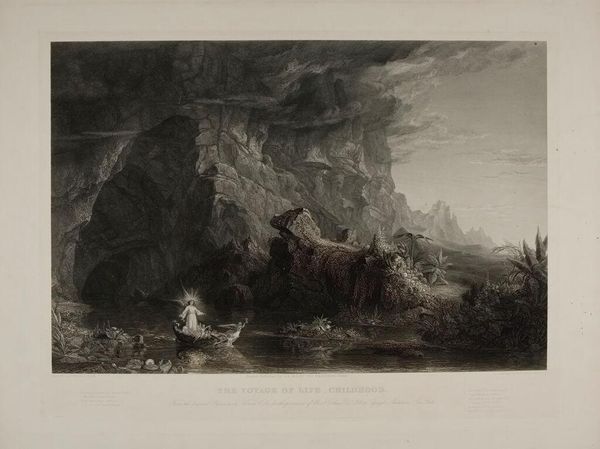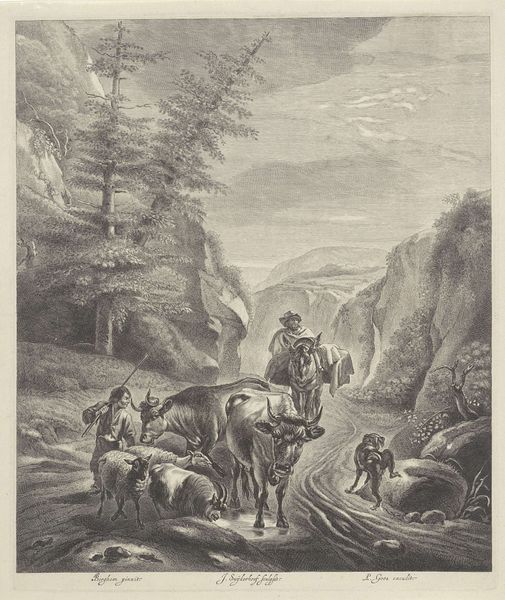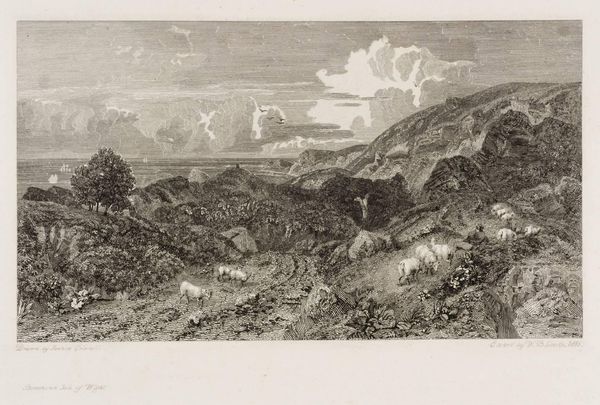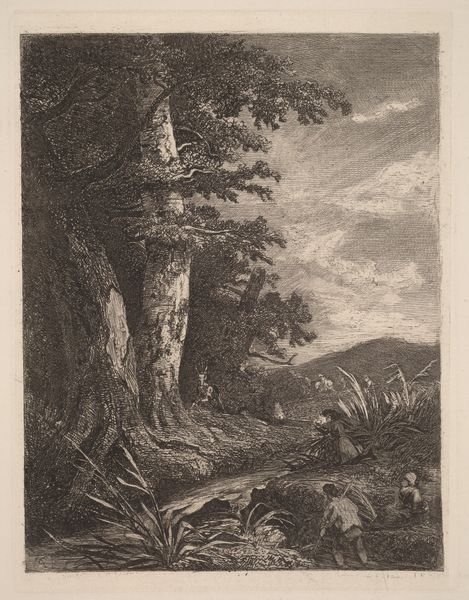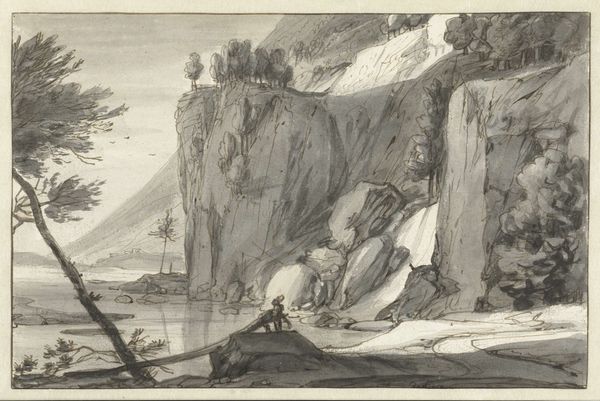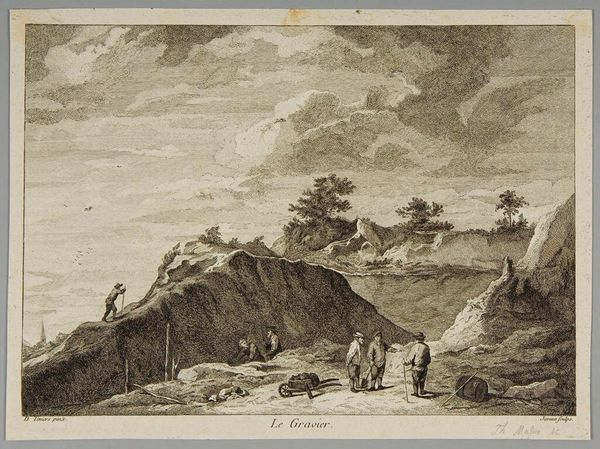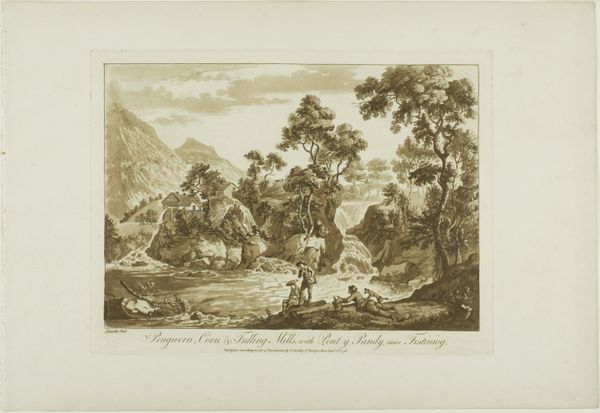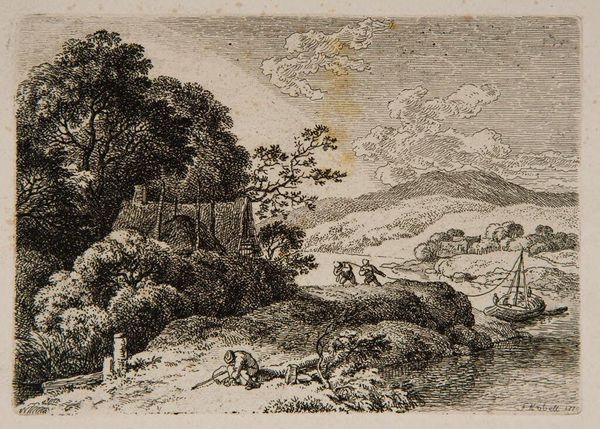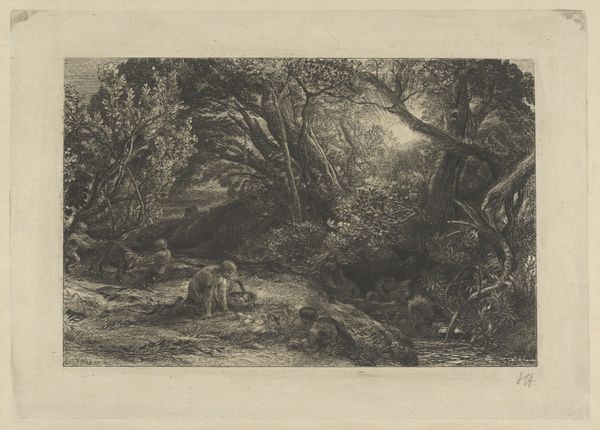
Louis VII, in Syria 1829
Copyright: CC0 1.0
Curator: Here we have Charles Ransonnette’s "Louis VII, in Syria," housed at the Harvard Art Museums. It plunges us into a moment of conflict during the Crusades. Editor: The composition is striking. See how the dark, dense foreground sharply contrasts with the distant, luminous landscape? It creates an immediate sense of tension. Curator: Precisely. Ransonnette captures the vulnerability of Louis VII’s forces. The landscape—Syria—becomes a stage where European ambitions meet harsh realities. Editor: Look at the tree looming over the soldiers. It acts almost as a dark curtain, framing the violence while simultaneously suggesting a hidden threat. Curator: Yes, and the very act of depicting Louis VII, a historical figure, in this moment of duress, subtly critiques the romanticized narratives of the Crusades. Editor: An interesting interpretation. For me, the stark use of light and shadow evokes a sense of impending doom, a feeling that resonates independently of its historical context. Curator: Perhaps. But the image's power lies, in part, in how it forces us to confront the uncomfortable truths behind the historical accounts. Editor: A powerful piece indeed, regardless of how you choose to analyze it. Curator: Indeed. It reminds us that even historical narratives can be seen through multifaceted artistic lenses.
Comments
No comments
Be the first to comment and join the conversation on the ultimate creative platform.
